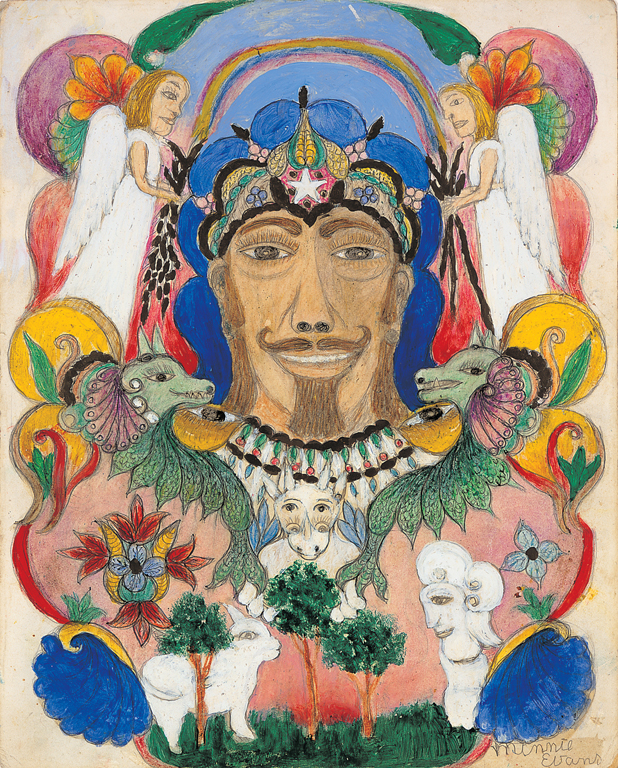Explain the concept of symmetry to your students, and introduce the artist Minnie Evans. Evans was an artist who was deeply interested in symmetry: her work often centers around one human face, surrounded by plants, animals, and fantasy creatures. Her pieces were often spiritually inspired.

Untitled, ca. 1946
Oil and pencil on paper
14 × 11 in. (35.56 × 27.94 cm)
Gift of Anthony Petullo M2012.42
Although Evans does not create portraits specifically—her figures are not defined and are often mythical or biblical—let her technique inspire your students to create portraits. They can choose someone meaningful to them such as a classmate or even a fictional character in a book they are reading for English class. Students should brainstorm objects, other people, animals, and places that are important to that person to include—in symmetry!—around the face of the person.
Extension: In Evans’s work, the picture is not always exactly symmetrical. What components are those? Why do students think Evans might have chosen to do this? Talk together about how putting something asymmetrical in a symmetrical work can make the asymmetry stand out more. What is the importance of those asymmetrical parts? Have your students include something in their artwork that is not visually symmetrical. They should have a reason for making that part stand out more.
